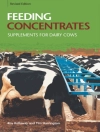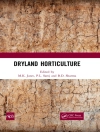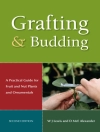Horticultural Reviews presents state-of-the-art reviews on topics in the horticultural sciences. The emphasis is on applied topics including the production of fruits, vegetables, nut crops, and ornamental plants of commerical importance. The title appears in the form of two volumes per year. These articles perform the valuable function of collecting, comparing, and contrasting the primary journal literature in order to form an overview of the topic. This detailed analysis bridges the gap between the specialized researcher and the broader community of horticultural scientists.
Table of Content
Contributors.
Dedication: Margaret Sedgley (Bryan Coombs).
l. Analyzing Fruit Tree Architecture: Implications for Tree
Management and Fruit Production (E. Costes, P. E. Lauri, and J.
L. Regnard).
I. Introduction.
II. Architectural Analysis.
III. Consequences of Tree Architecture for Tree Training,
Orchard Management, and Fruit Production.
IV. Conclusions.
V. Glossary.
Literature Cited.
2. Peach Orchard Systems (Richard P. Marini and Luca
Corelli-Grappadelli).
I. Introduction.
II. Crop Physiology.
III. Light Management.
IV. Peach Orchard Systems.
V. Vigor-Controlling Methods for Peach Trees.
VI. Limitations to High Peach Yields.
VII. Future Trends and Direction.
Literature Cited.
3. Irrigation Scheduling and Evaluation of Tree Water Status
in Deciduous Orchards (Amos Naor).
I. Introduction.
II. The Modern Irrigation Scheduling Concept.
III. Deficit Irrigation.
IV. Water Stress Assessment and Timing of Irrigation.
V. Concluding Remarks.
Literature Cited.
4. Leucadendron: A Major Proteaceous Floricultural Crop
(Jaacov Ben-Jaacov and Avner Silber).
I. Introduction.
II. Botany of the Genus Leucadendron.
III. World Industry and Economics.
IV. Horticulture.
V. Crop Potential and Research Needs.
Literature Cited.
5. Chinese Jujube: Botany and Horticulture (Mengjun
Liu).
I. Introduction.
II. Botany.
III. Physiology.
IV. Environmental Requirements.
V. Horticulture.
Literature Cited.
6. Taxus spp.: Botany, Horticulture, and Source of
Anti-Cancer Compounds (John M. De Long and Robert K.
Prange).
I. Introduction.
II. Historical.
III. Botany.
IV. Horticulture.
V. Pharmacology of Anti-Cancer Compounds from Taxus.
VI. Conclusions.
Literature Cited.
7. The Genus Allium: A Developmental and Horticultural
Analysis (Rina Kamenetsky and Haim D. Rabinowitch).
I. Introduction.
II. Taxonomy and Geographical Distribution.
III. Genetic Resources and Possible Use of Wild Allium
Species.
IV. Morphological Structures and Comparisons Between
Biomorphological Groups.
V. Plant Development.
VI. Propagation.
VII. Chemical Composition.
VIII. Concluding Remarks.
Literature Cited.
8. The Invasive Plant Debate: A Horticultural Perspective
(Alex X. Niemiera and Guy Phillips).
I. Introduction.
II. Perspectives.
III. Ecology of Invasive Species.
IV. Regulatory Matters.
V. Conclusion.
Literature Cited.
Appendix A.
Subject Index.
Cumulative Subject Index.
Cumulative Contributor Index.
About the author
Jules Janick is the James Troop Distinguished Professor of Horticulture at Purdue University in West Lafayette, IN, USA.












